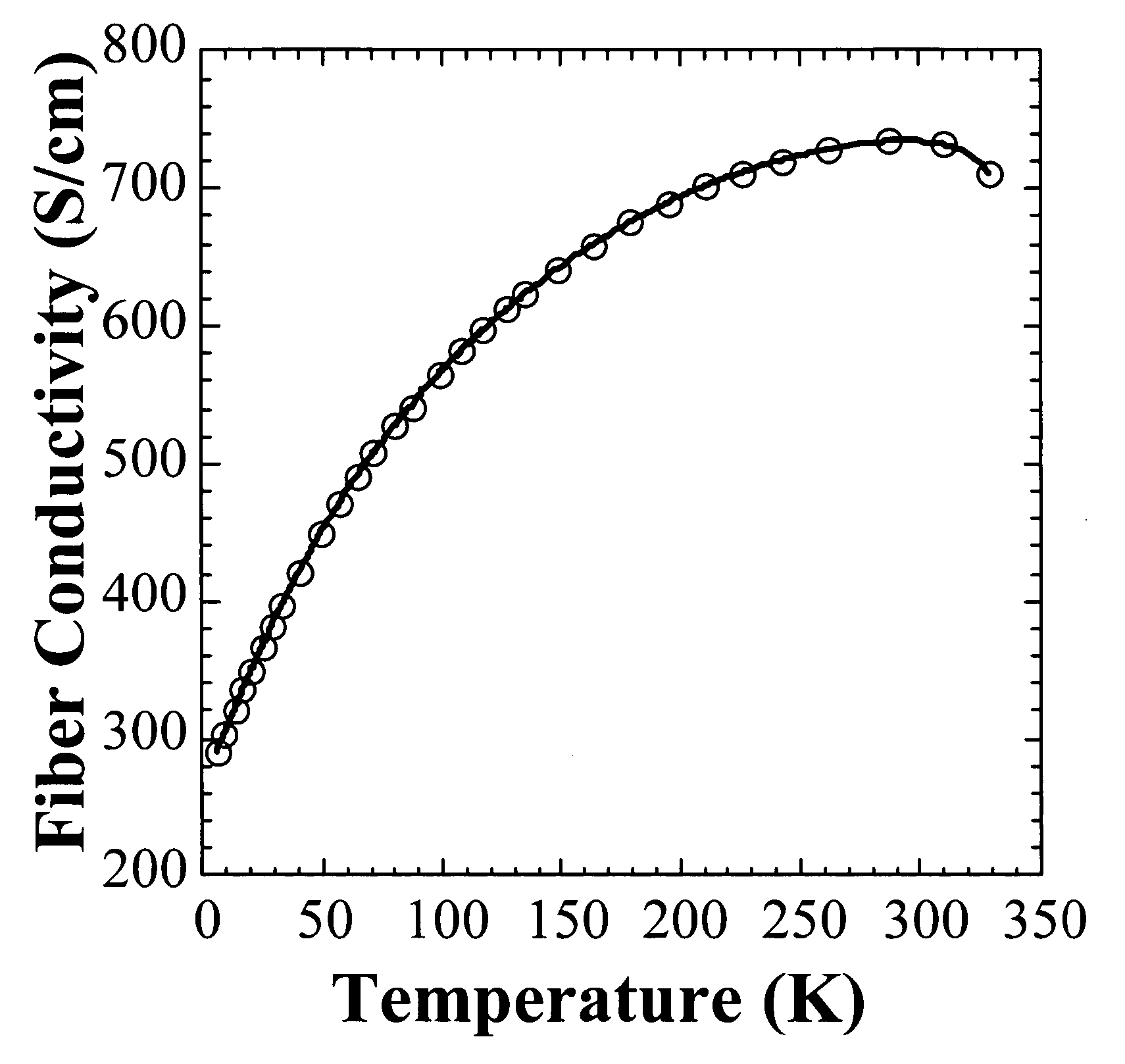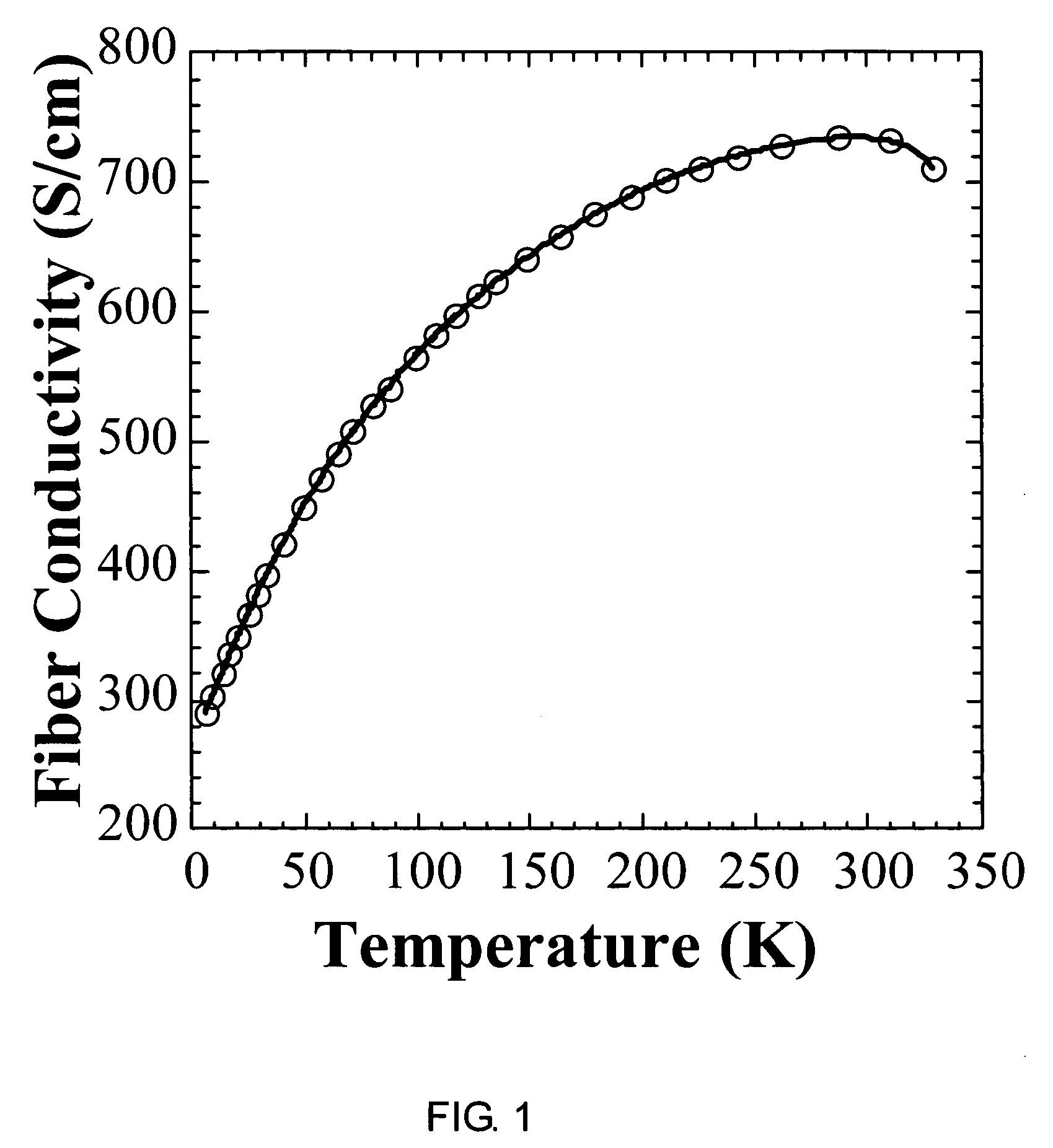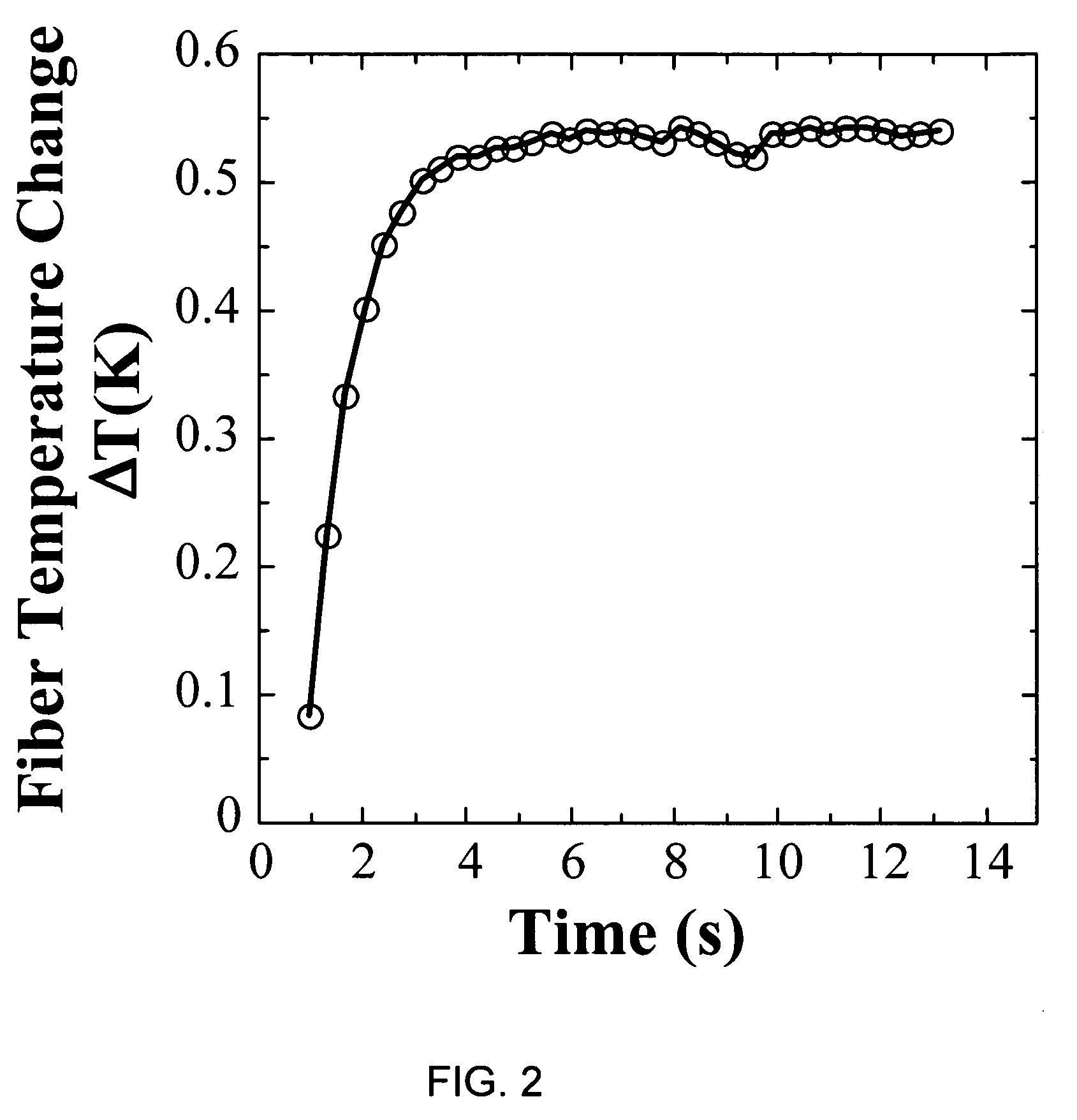Resistive heating using polyaniline fiber
- Summary
- Abstract
- Description
- Claims
- Application Information
AI Technical Summary
Benefits of technology
Problems solved by technology
Method used
Image
Examples
Embodiment Construction
[0039]Briefly, the present invention includes the use of conductive PANI.AMPSA0.6 fibers for resistive heating applications. Fibers were spun from a solution of a mixture of a chosen amount of polyaniline powder with 2-acrylamido-2-methyl-1-propanesulfonic acid (AMPSA) in dichloracetic acid (DCAA). Subsequent to spinning, the fibers were partially ion exchanged using phosphoric acid and then stretched, or stretched and dedoped and redoped with selected dopants.
[0040]Electrical current-induced destruction of conductivity for polyaniline fibers resulting from the application of a current characteristic of a particular conductive polyaniline fiber has been observed at temperatures lower than the temperature at which dopant molecules in the conductive polymer are lost or decompose, or the temperature at which the polyaniline backbone decomposes. The temperature at which this effect occurs is dependent on the dopant and on the fiber diameter. Polyaniline fibers may therefore be used for ...
PUM
| Property | Measurement | Unit |
|---|---|---|
| Pressure | aaaaa | aaaaa |
| Pressure | aaaaa | aaaaa |
| Electrical conductivity | aaaaa | aaaaa |
Abstract
Description
Claims
Application Information
 Login to view more
Login to view more - R&D Engineer
- R&D Manager
- IP Professional
- Industry Leading Data Capabilities
- Powerful AI technology
- Patent DNA Extraction
Browse by: Latest US Patents, China's latest patents, Technical Efficacy Thesaurus, Application Domain, Technology Topic.
© 2024 PatSnap. All rights reserved.Legal|Privacy policy|Modern Slavery Act Transparency Statement|Sitemap



